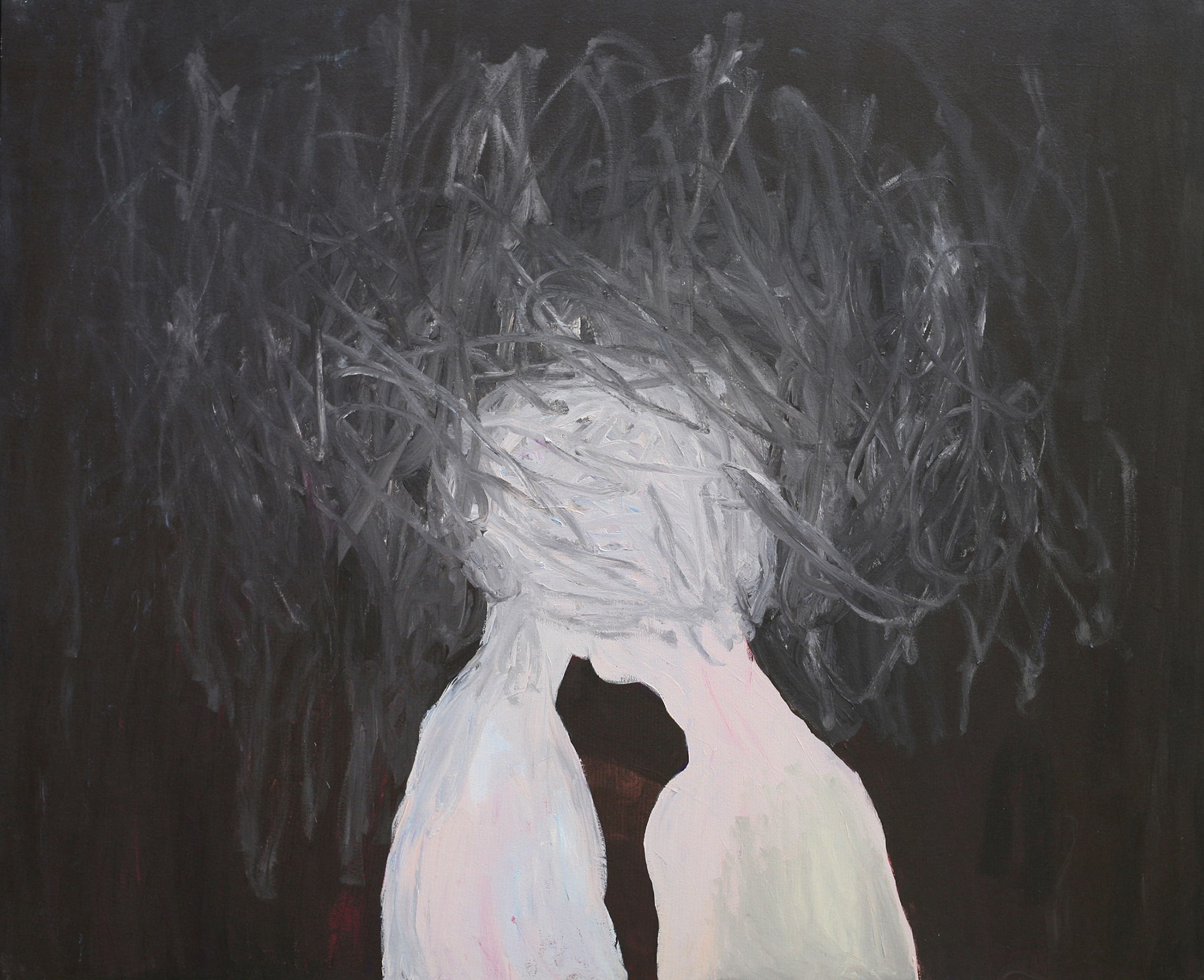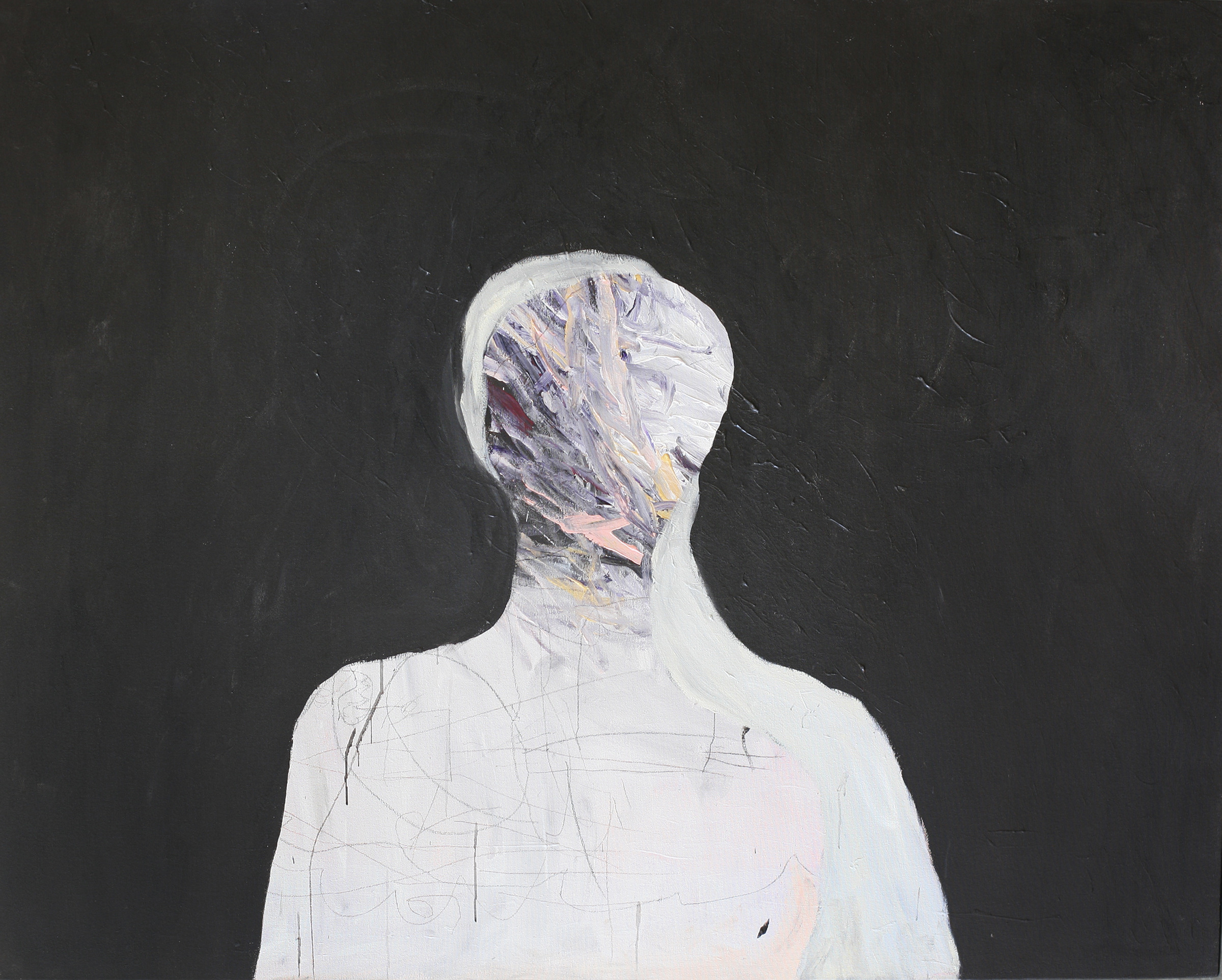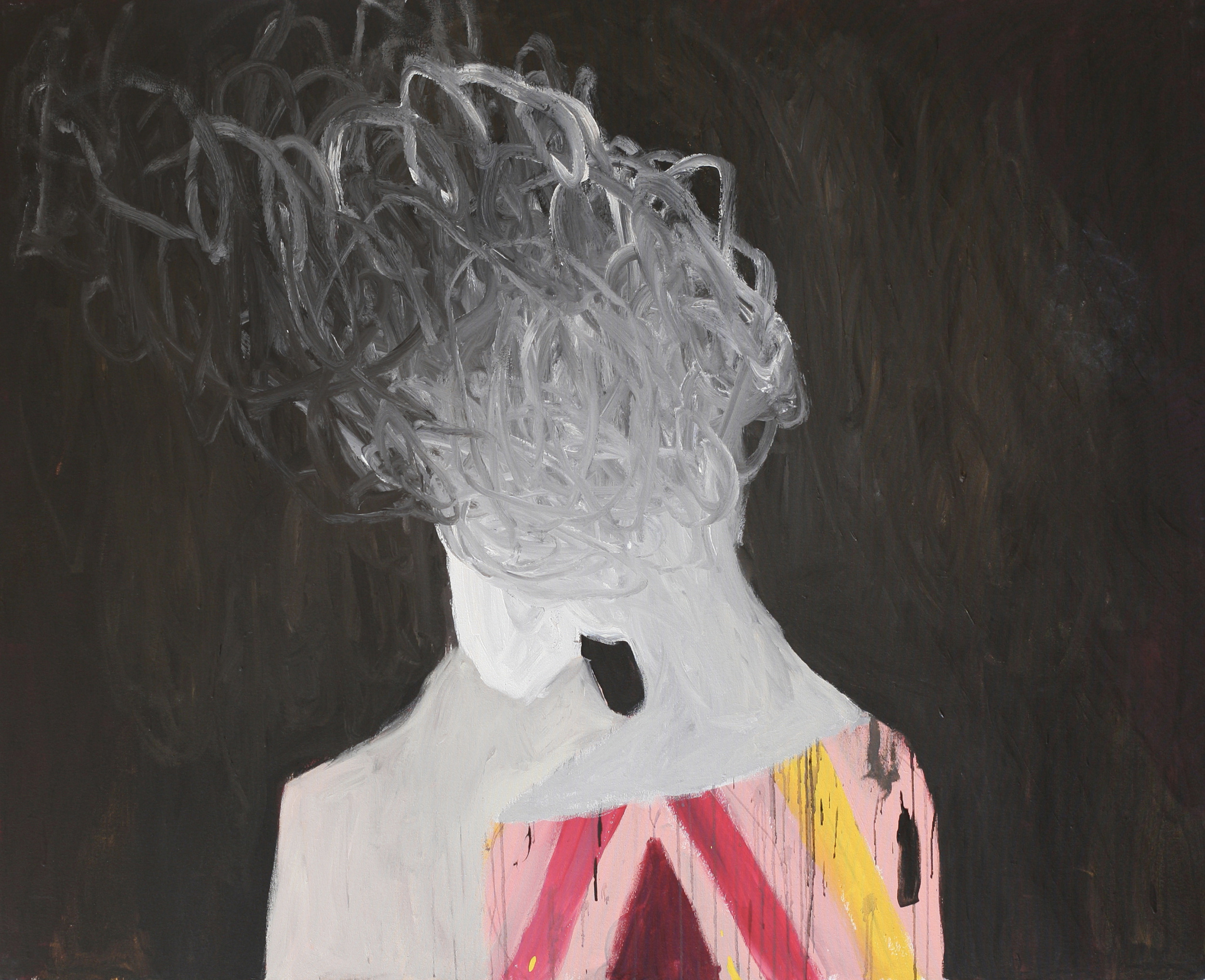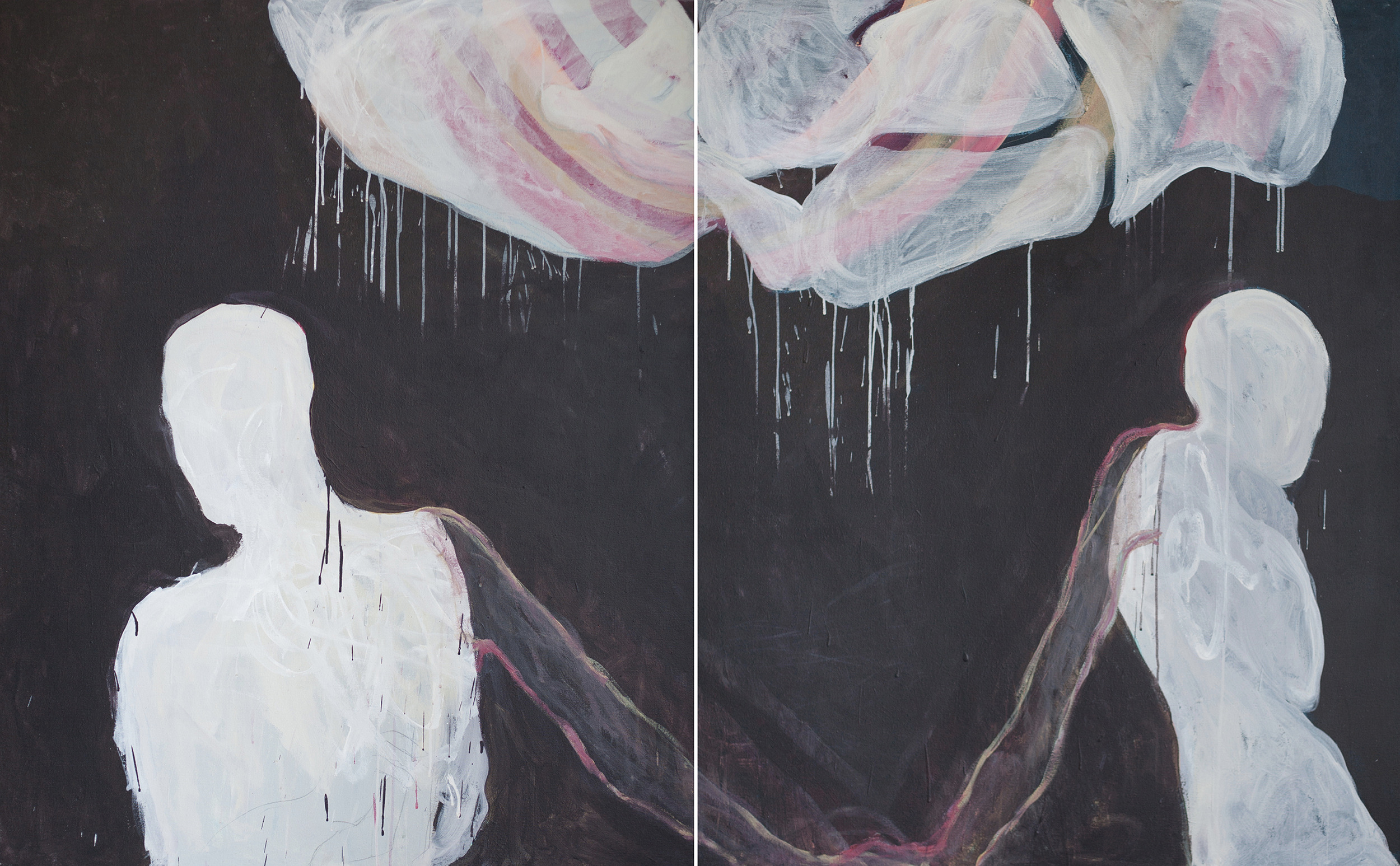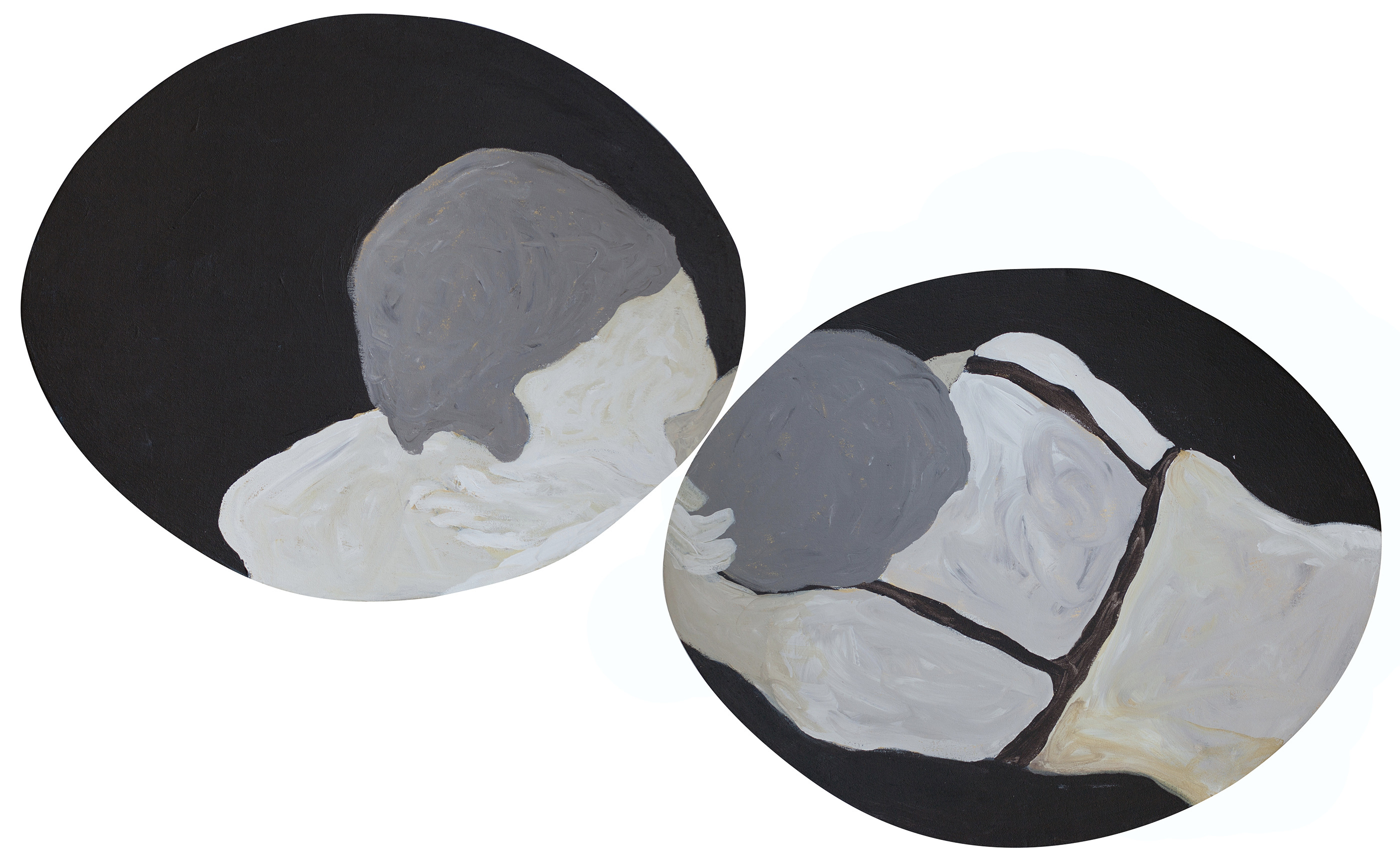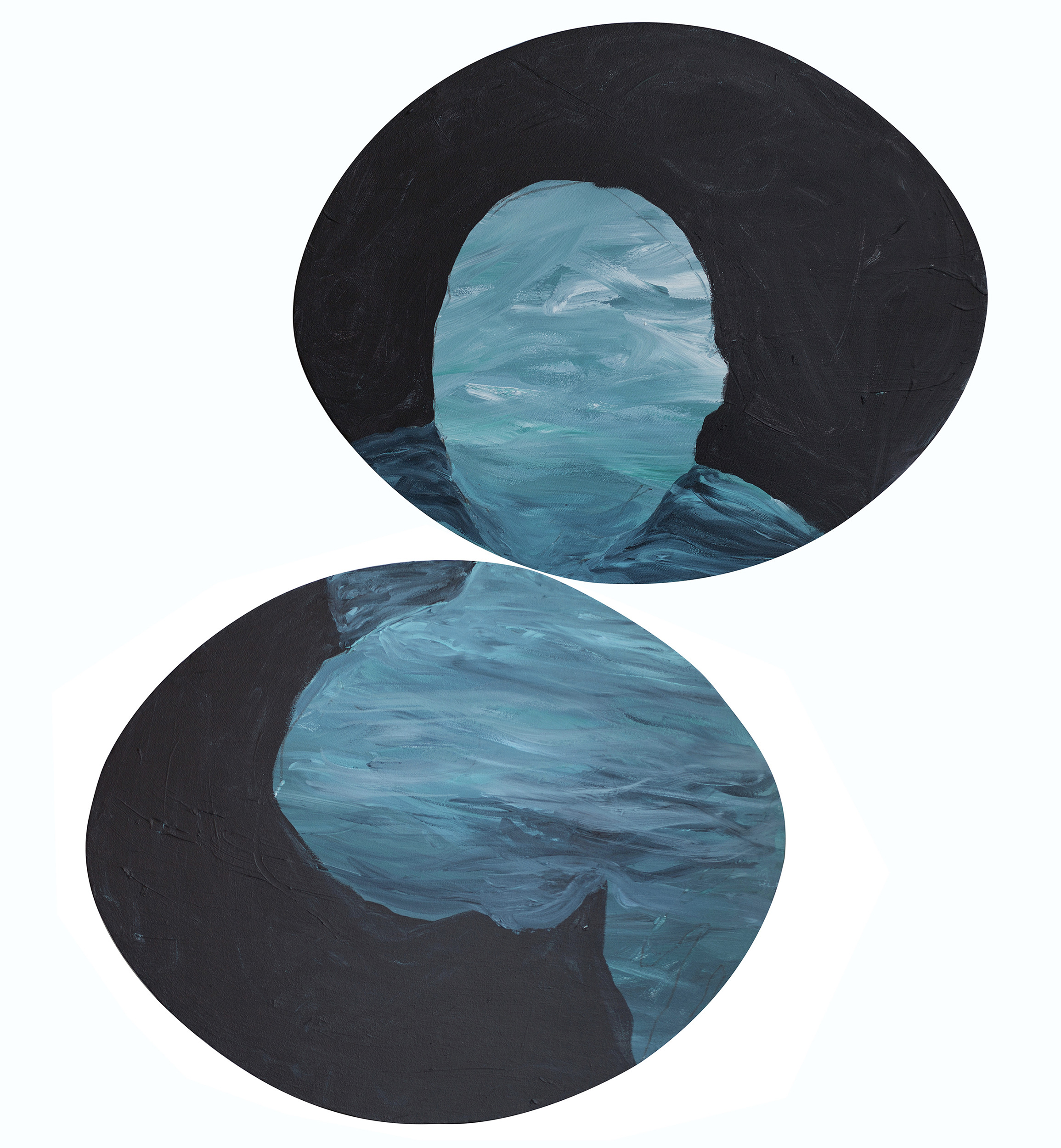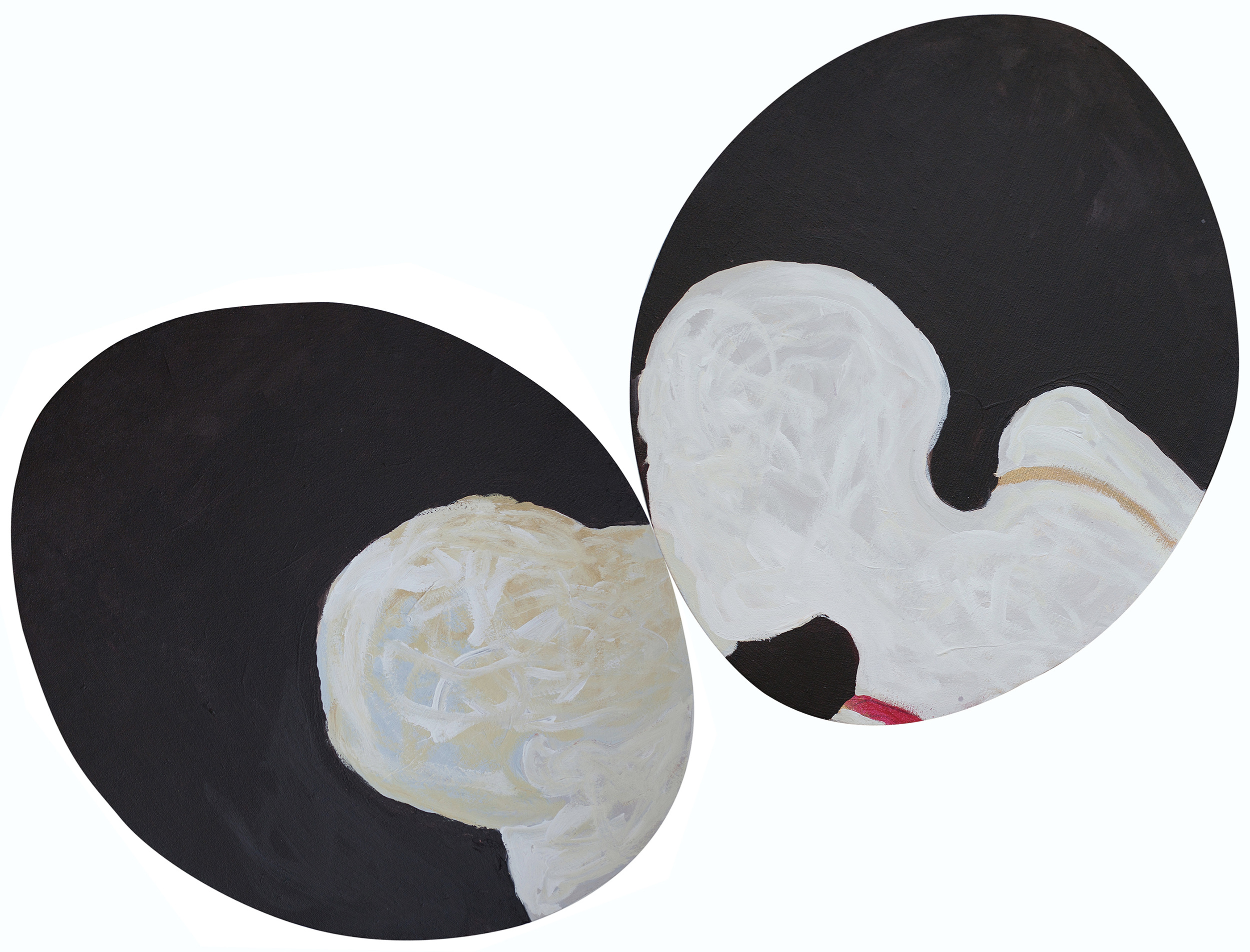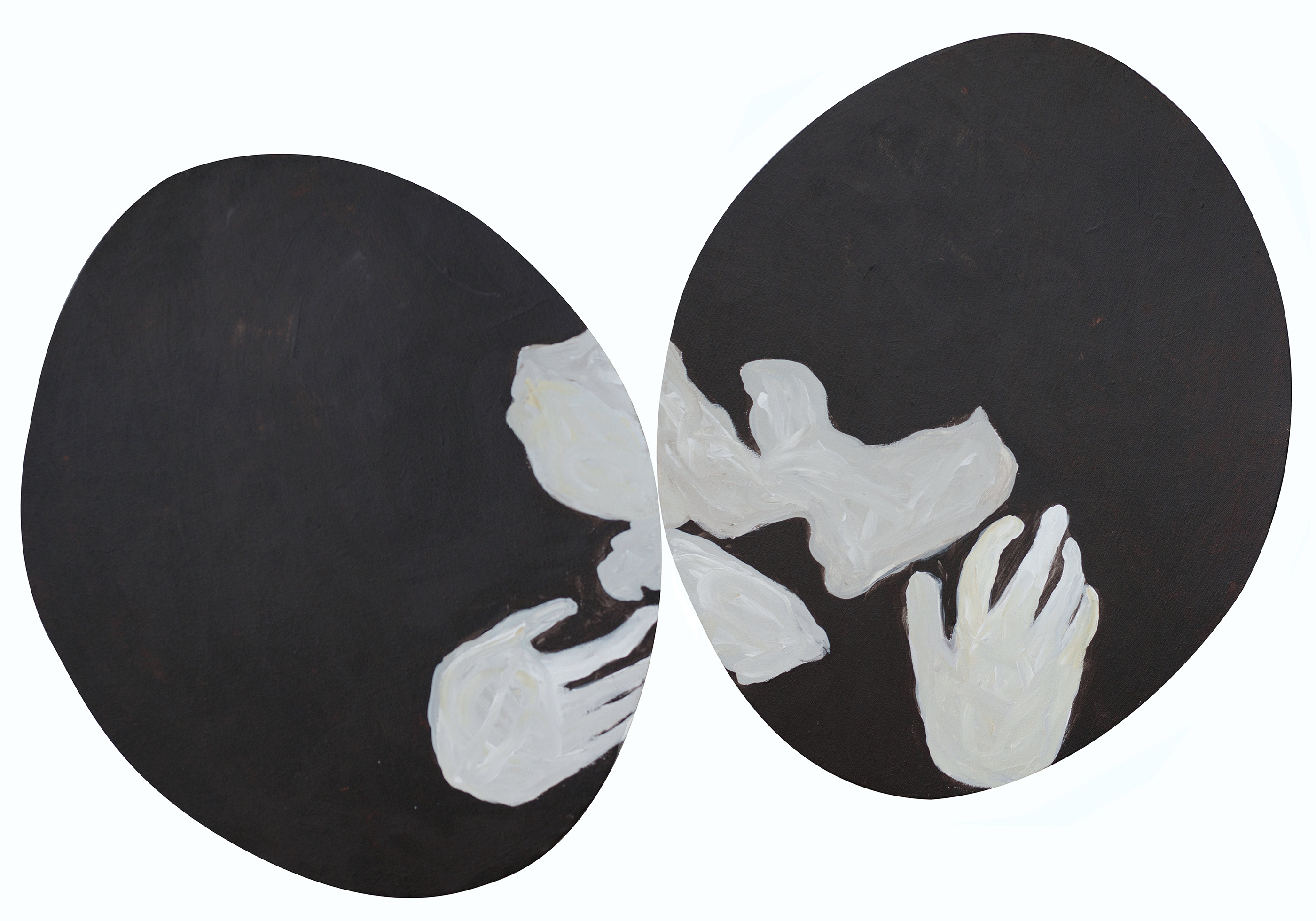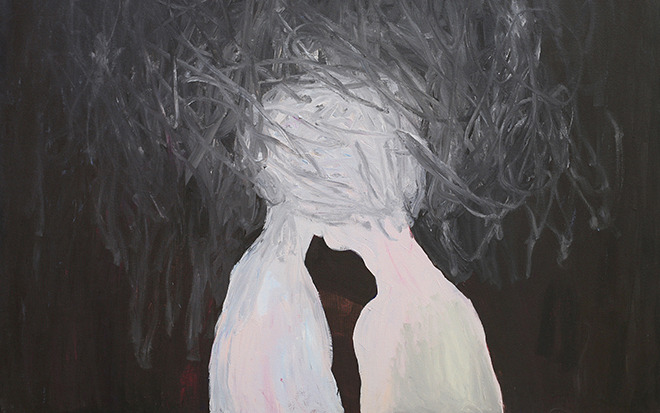
The First Kiss on Earth
Chati Coronel
Silverlens, Singapore
About
In my quest to create a series about death, strangely but unsurprisingly, I stumbled upon a series about kisses. I posed a question to myself "What was a kiss before the word 'kiss' was invented?" I began exploring the them of universal union, painting layers of images in each piece, striving to achieve a point of harmont. The face-less, gender-less figures point to cosmic forces rather than personal representations, united in dark space, at one intimate and vast.
- Chati Coronel
The First Kiss on Earth
June 2014
In The First Kiss on Earth, Chati Coronel traces her subject back to its primordial origins, imagining the kiss in a time before language and attempting to frame this crucial moment of union before it was, or ever could be, set down in words: “I asked myself the question, ‘What was a kiss before the word kiss was invented?’ I wanted to know the essence of a kiss and boil it down to the universal force that drove it.”
The result is a series that vacillates between and hinges on both clarity and obscurity, the recourse of an artist seeking to unwrite the kiss and relieve it of all its worn-down meanings. In “A Kiss is Also a Map,” stray bodies – bare, isolated, and stark against the surrounding void – seem to lose definition just as they come together, unravelling at the point of union into rough brushstrokes that never assemble into recognizable forms or words. But rather than eating away at the unknowable, as most maps do, the painting enacts a different sort of cartography. The kiss spawns its own strange territory, which no one has yet charted, studied, or conquered. It is as if the union of once-separate entities, pared down to their kiss, cannot be described or revealed if it is to remain sacred. So it disappears into mesh, knot, and veil, carving a space for itself in a world that has yet to take shape. The kiss is a church, as well as a void. It is also an Island, closing off its lovers so that – one blank, the other storied – they create a world in themselves.
By realizing the kiss outside time and place, the artist has transformed it into much more, and much less, than a romantic gesture. As the dialogue between dark and light suggests, Coronel is tapping into ambiguous cosmic forces and not simply toying with human figures. Because these bodies are free of mark and feature, they are nothing more than anonymous entities kissing in a void: “I wanted to remain in the world of the abstract but to hinge the images on recognizable forms that are meant to draw the viewer in.”
Although these vague forms speak of the primal and the timeless, the paintings also allude to a rather complex chronology in which certain details – phantom limbs, scratches on skin, a sudden article of clothing – call up a host of lost or untold stories. The layers of Coronel’s palimpsests drip and bleed into each other. Both skin and void thin out in places, revealing more than they cover up: rainbows showing through whitewash, shades that existed before black. “All this,” she points out, “[is] painted in somber colors, hiding, sometimes offering glimpses into the vivid absolute knowing of oneness.”
In “Sometimes Only the Space Between Us is Kissing,” Coronel exposes the odd coincidence of divide and conduit, using the empty space between two figures (and two canvases) as both gap and bridge. But the tension is most palpable in “A Kiss is a Void Poured Into a Void,” a set of oval diptychs in which each kiss teeters upon a vital tangent, perpetually at risk of separation. In this light, the paintings become more poignant, the diptychs in particular suggesting that any sort of harmony is sacred only because it is so fleeting and precarious; a kiss pushes its entities to the brink. To kiss, the artist acknowledges, is to flirt with a darker and more irrevocable form of union. “Maybe,” she ventures, raising the stakes, “a kiss is also a form of death.
Words by Michaela Atienza
Obliquely arriving at painting by way of a degree in Architecture, Chati Coronel has consistently found honest expression through painting for the past 20 years. Although her influences include a whole spectrum from Tibetan Buddhism to fashion to fairy tales to poetry, Chati’s artistic vision is crystal clear. She is known for her multi-layered koan-like paintings that make use of raw strokes, rough lines and soft colors to arrive at wonder.
Works
